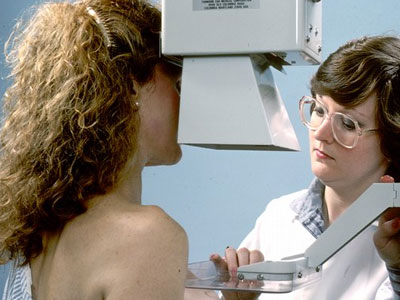Recent news of a study that casts doubt on the life-saving value of mammograms is a huge health science story — fueling more intense debate about the tests’ role in detecting breast cancer at treatable stages — but it’s also a pretty big business-of-healthcare story you may wish to follow up on, as well.
To recap, the Canadian study, which for decades has followed the health of some 90,000 women, found that those who were randomly assigned to have annual mammography were not less likely to die of breast cancer than women who did not receive the screening.
Indeed, some researchers and analysts are suggesting that frequent screening can lead to over-diagnosis, unnecessary invasive treatment and unnecessary exposure to radiation. As U.S. News & World Reports noted, the recent results follow on a 2009 change in recommendation by the U.S. Preventative Services Task Force, which now advocates less frequent screening.
The study results were not well received by the American College of Radiology, the professional associaton for that field, which called the Canadian study results flawed and misleading. Whatever the true health science is, you might want to look into the financial interests on either side of the debate over mammography.
It’s big business. And the value of mammography is an interesting conundrum because it’s one of the preventative tools mandated by the Affordable Care Act, although many individual states mandated the coverage before the ACA was enacted.
This just-out Annals of Internal Medicine report says annual spending in the U.S. on the tests is nearly $8 billion. According to MarketResearch.com, the screening is recommended in 17 million doctor visits each year, and the global market for mammography equipment is growing at around 6 percent a year, expected to hit $650 billion by 2019, according to GBI research. According to Reuters, Medicare spends $1 billion a year on mammograms — about as much as it spends treating breast cancer.
This Bloomberg column from 2012 suggests that for every $100 spent on mammography, $30-33 is spent to evaluate false positive results, costing Medicare alone $250 million per year.
Cancer is one of those subjects that stirs up a lot of emotion, scientific debate and even conspiracy theories, and that seems to hold true when it comes to discerning the agenda behind various pro-and anti-mammogram groups. Some claim the recommendations for annual screening are a profit-driven scam on consumers, while other groups warn against relaxing standards for mammography and say that the imaging technique is so unprofitable that facilities are dwindling. It might be worth posing questions about the mammography industry in your area to health systems, independent and for-profit imaging centers, radiologists and regulators.
The Mammography Quality Standards Act sets federal guidelines for centers that provide the service; to find out who’s in the mammography business in your region, use this searchable database from the U.S. Food and Drug Administration, which lets you search by state or by ZIP code for accredited mammography sites. The American College of Radiology also offers a search engine.
On the FDA site, note also that there are national statistics on the number of centers, and other inspection-related information including safety notifications (which are few and far between.)
Obviously any medical device makers or researchers from your neck of the woods have a stake in this and other imaging technology; you might search for them via state regulators.











